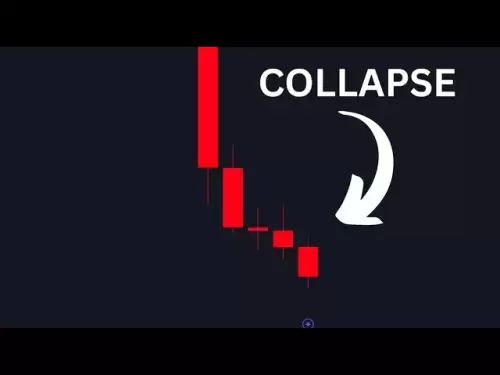-
 Bitcoin
Bitcoin $113900
-1.39% -
 Ethereum
Ethereum $3517
-4.15% -
 XRP
XRP $3.009
1.59% -
 Tether USDt
Tether USDt $0.9997
-0.04% -
 BNB
BNB $766.8
-1.41% -
 Solana
Solana $164.6
-2.38% -
 USDC
USDC $0.9998
-0.02% -
 TRON
TRON $0.3277
0.65% -
 Dogecoin
Dogecoin $0.2023
-1.67% -
 Cardano
Cardano $0.7246
0.05% -
 Hyperliquid
Hyperliquid $38.27
-4.77% -
 Sui
Sui $3.528
-0.52% -
 Stellar
Stellar $0.3890
-0.73% -
 Chainlink
Chainlink $16.16
-2.69% -
 Bitcoin Cash
Bitcoin Cash $539.9
-4.38% -
 Hedera
Hedera $0.2425
-2.00% -
 Avalanche
Avalanche $21.71
-0.97% -
 Toncoin
Toncoin $3.662
5.73% -
 Ethena USDe
Ethena USDe $1.000
-0.02% -
 UNUS SED LEO
UNUS SED LEO $8.964
0.35% -
 Litecoin
Litecoin $107.7
2.33% -
 Shiba Inu
Shiba Inu $0.00001223
-0.40% -
 Polkadot
Polkadot $3.617
-0.97% -
 Uniswap
Uniswap $9.052
-2.49% -
 Monero
Monero $295.1
-3.79% -
 Dai
Dai $0.9999
0.00% -
 Bitget Token
Bitget Token $4.315
-1.85% -
 Pepe
Pepe $0.00001060
0.11% -
 Cronos
Cronos $0.1342
-2.72% -
 Aave
Aave $256.0
-0.87%
What is lightning network routing of blockchain? How to ensure successful payment?
The Lightning Network enhances Bitcoin transactions by enabling off-chain routing through payment channels, reducing fees and congestion.
Apr 27, 2025 at 05:35 pm
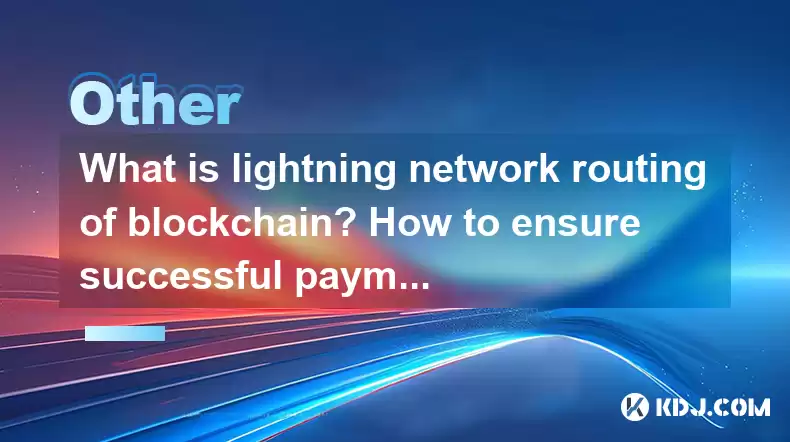
The Lightning Network represents a significant advancement in blockchain technology, particularly for cryptocurrencies like Bitcoin. It is a second-layer scaling solution designed to facilitate faster and cheaper transactions by creating payment channels between parties. Understanding Lightning Network routing is crucial for users who want to leverage this technology for their transactions.
What is Lightning Network Routing?
Lightning Network routing is the process by which payments are transferred from the sender to the receiver through multiple intermediary nodes. Each node in the network acts as a relay, forwarding payments to the next node until they reach the final destination. This routing mechanism is essential because it allows for off-chain transactions that do not need to be recorded on the blockchain, thereby reducing congestion and transaction fees.
The routing process relies on a network of nodes that maintain open payment channels with each other. When a payment is initiated, the sender's node searches for a path through the network to the receiver's node. This path is determined based on factors such as channel capacity, fees, and the reliability of the nodes involved.
How Does Lightning Network Routing Work?
To understand how Lightning Network routing works, it's important to grasp the concept of payment channels. A payment channel is a bilateral agreement between two parties to conduct multiple transactions off-chain. These transactions are only settled on the blockchain when the channel is closed, allowing for instant, low-cost transfers.
When a payment is made through the Lightning Network, it follows a path of payment channels. For instance, if Alice wants to send money to David, but they do not have a direct channel, the payment might go through Bob and Charlie. Alice sends the payment to Bob, who forwards it to Charlie, who then sends it to David. Each hop in this chain requires the intermediary nodes to update their channel balances accordingly.
Ensuring Successful Payment Through Lightning Network
Ensuring a successful payment through the Lightning Network involves several key factors:
Sufficient Liquidity: Each node along the payment path must have enough funds in their channels to forward the payment. If a node lacks sufficient liquidity, the payment will fail.
Reliable Nodes: The nodes chosen for routing should be reliable and have a good track record of forwarding payments. Nodes with a history of failing to route payments can cause transactions to fail.
Optimal Routing Algorithms: The sender's node uses routing algorithms to find the best path for the payment. These algorithms consider factors like fees, channel capacity, and node reliability to determine the most efficient route.
Correct Fee Structure: Each intermediary node charges a fee for forwarding the payment. The sender must ensure that the total fees do not exceed the amount being sent, otherwise the payment will fail.
Steps to Ensure Successful Payment
To ensure a successful payment through the Lightning Network, follow these steps:
Check Channel Balances: Before initiating a payment, ensure that you have enough funds in your channel to cover the transaction amount and any fees. You can do this by:
- Opening your Lightning Network wallet.
- Navigating to the channel management section.
- Reviewing the balance of your open channels.
Select Reliable Nodes: Choose nodes with a good reputation for reliability. You can do this by:
- Using a Lightning Network explorer to view node performance metrics.
- Selecting nodes with high uptime and successful payment rates.
Use Optimal Routing: Ensure your wallet uses an effective routing algorithm. Many wallets automatically handle this, but you can:
- Check your wallet settings for routing options.
- Ensure that your wallet is updated to the latest version with improved routing capabilities.
Set Appropriate Fees: Ensure the fees you set for the payment are sufficient to cover the costs of routing. You can:
- Adjust the fee settings in your wallet before sending the payment.
- Monitor the network's average fee rates to set a competitive fee.
Common Challenges in Lightning Network Routing
Despite its advantages, Lightning Network routing can face several challenges:
Liquidity Issues: If a node along the payment path does not have enough funds, the payment will fail. This is a common issue, especially for larger transactions.
Routing Failures: If a node goes offline or fails to forward the payment, the transaction can fail. This can be mitigated by choosing reliable nodes and using robust routing algorithms.
Privacy Concerns: The routing process can reveal information about the sender and receiver. Using techniques like onion routing can help maintain privacy.
Fee Management: Managing fees effectively is crucial. If fees are set too low, nodes may refuse to forward the payment, leading to failures.
Tools and Services for Lightning Network Routing
Several tools and services can help users navigate the complexities of Lightning Network routing:
Lightning Network Explorers: These tools provide insights into the network's topology, node performance, and channel capacities. Users can use them to select the best nodes for routing.
Routing Algorithms: Advanced algorithms like the Shortest Path Algorithm and the Minimum Cost Flow Algorithm are used by wallets to find the most efficient routes for payments.
Liquidity Providers: Some services offer to provide liquidity to nodes, ensuring that payments can be routed successfully. Users can subscribe to these services to enhance their node's capabilities.
Wallet Software: Modern Lightning Network wallets come equipped with sophisticated routing capabilities. Users should choose wallets that support advanced routing features to maximize their chances of successful payments.
Frequently Asked Questions
Q: Can I use the Lightning Network for any amount of payment?
A: While the Lightning Network is designed to handle microtransactions efficiently, it can also be used for larger payments. However, larger payments may face more challenges related to liquidity and routing.
Q: How can I improve the privacy of my Lightning Network transactions?
A: To enhance privacy, you can use techniques like onion routing, which encrypts the payment path, and use wallets that support privacy features like payment splitting and channel shuffling.
Q: What happens if a payment fails on the Lightning Network?
A: If a payment fails, the funds are not lost. The payment is rolled back, and the sender can try again with a different route or after adjusting the fees.
Q: Are there any fees associated with using the Lightning Network?
A: Yes, each intermediary node charges a small fee for forwarding payments. These fees are typically very low compared to on-chain transaction fees but must be considered when sending payments.
Disclaimer:info@kdj.com
The information provided is not trading advice. kdj.com does not assume any responsibility for any investments made based on the information provided in this article. Cryptocurrencies are highly volatile and it is highly recommended that you invest with caution after thorough research!
If you believe that the content used on this website infringes your copyright, please contact us immediately (info@kdj.com) and we will delete it promptly.
- Bitcoin Strategy: Saylor's Not Hoarding, He's Building an Empire
- 2025-08-02 22:30:12
- Bitcoin Bloodbath: Macro Pressures and Liquidations Unleash Crypto Chaos
- 2025-08-02 22:30:12
- Tron, Cold Wallets, and Crypto Trends: What's Hot in the Market?
- 2025-08-02 23:10:12
- Bitcoin's Wild Ride: Davinci, Investors, and the $500K Dream
- 2025-08-02 23:50:12
- Worldcoin, Identity, WLD Price: Decoding the NYC Crypto Buzz
- 2025-08-02 21:10:12
- Shiba Inu: Utility and Community Strength Drive Crypto's Evolution
- 2025-08-02 21:50:12
Related knowledge

What is the difference between on-chain and off-chain transactions?
Aug 02,2025 at 04:22pm
Understanding On-Chain TransactionsOn-chain transactions refer to digital asset transfers that are recorded directly on a blockchain ledger. These tra...

What is the double-spending problem and how does blockchain prevent it?
Aug 02,2025 at 01:07pm
Understanding the Double-Spending ProblemThe double-spending problem is a fundamental challenge in digital currency systems where the same digital tok...

What is the difference between a blockchain and a database?
Aug 01,2025 at 09:36pm
Understanding the Core Structure of a BlockchainA blockchain is a decentralized digital ledger that records data in a series of immutable blocks linke...
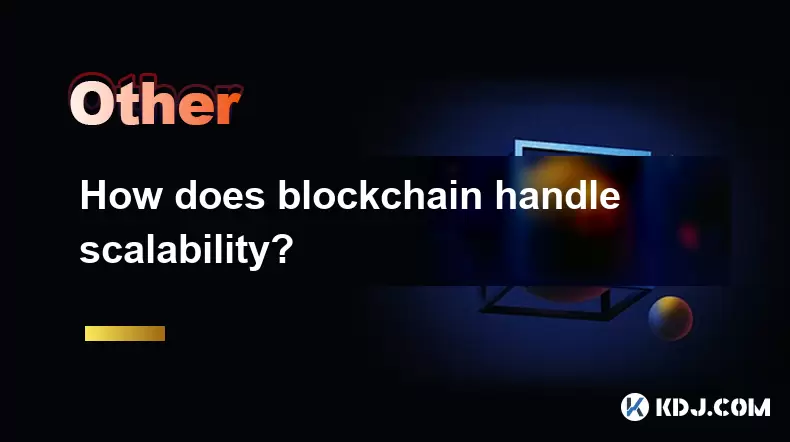
How does blockchain handle scalability?
Aug 02,2025 at 02:58pm
Understanding Blockchain Scalability ChallengesBlockchain scalability refers to a network's ability to handle an increasing volume of transactions wit...
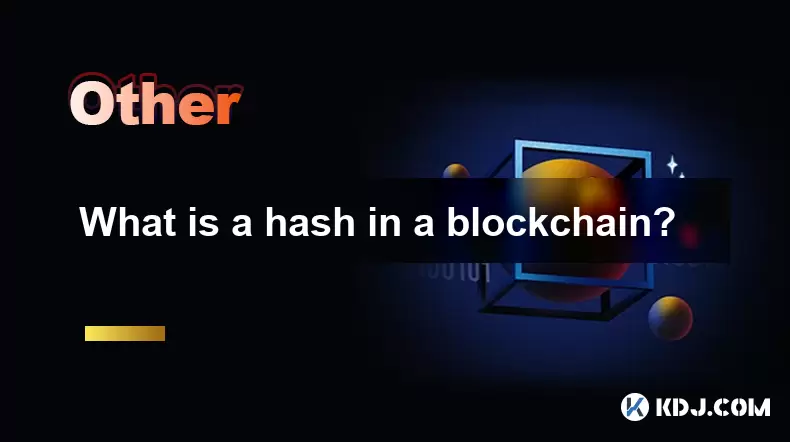
What is a hash in a blockchain?
Aug 02,2025 at 05:28am
Understanding the Concept of Hash in BlockchainA hash in the context of blockchain technology refers to a unique digital fingerprint generated by a cr...
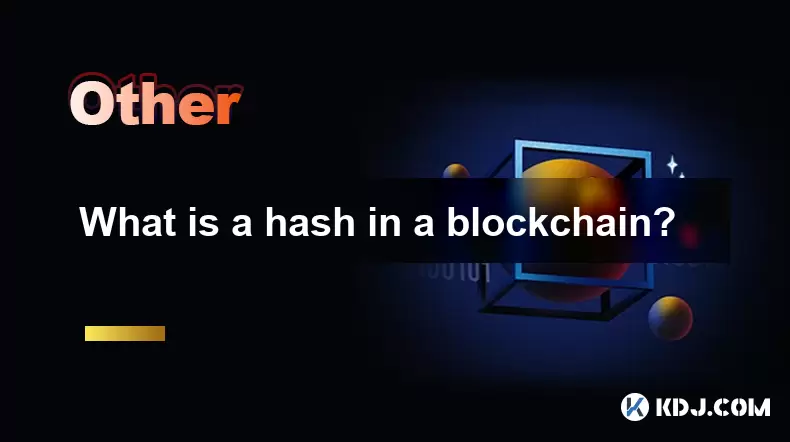
What is a hash in a blockchain?
Aug 02,2025 at 04:43am
Understanding the Concept of Hash in BlockchainA hash in the context of blockchain technology refers to a unique digital fingerprint generated by a cr...

What is the difference between on-chain and off-chain transactions?
Aug 02,2025 at 04:22pm
Understanding On-Chain TransactionsOn-chain transactions refer to digital asset transfers that are recorded directly on a blockchain ledger. These tra...

What is the double-spending problem and how does blockchain prevent it?
Aug 02,2025 at 01:07pm
Understanding the Double-Spending ProblemThe double-spending problem is a fundamental challenge in digital currency systems where the same digital tok...

What is the difference between a blockchain and a database?
Aug 01,2025 at 09:36pm
Understanding the Core Structure of a BlockchainA blockchain is a decentralized digital ledger that records data in a series of immutable blocks linke...

How does blockchain handle scalability?
Aug 02,2025 at 02:58pm
Understanding Blockchain Scalability ChallengesBlockchain scalability refers to a network's ability to handle an increasing volume of transactions wit...

What is a hash in a blockchain?
Aug 02,2025 at 05:28am
Understanding the Concept of Hash in BlockchainA hash in the context of blockchain technology refers to a unique digital fingerprint generated by a cr...

What is a hash in a blockchain?
Aug 02,2025 at 04:43am
Understanding the Concept of Hash in BlockchainA hash in the context of blockchain technology refers to a unique digital fingerprint generated by a cr...
See all articles

























